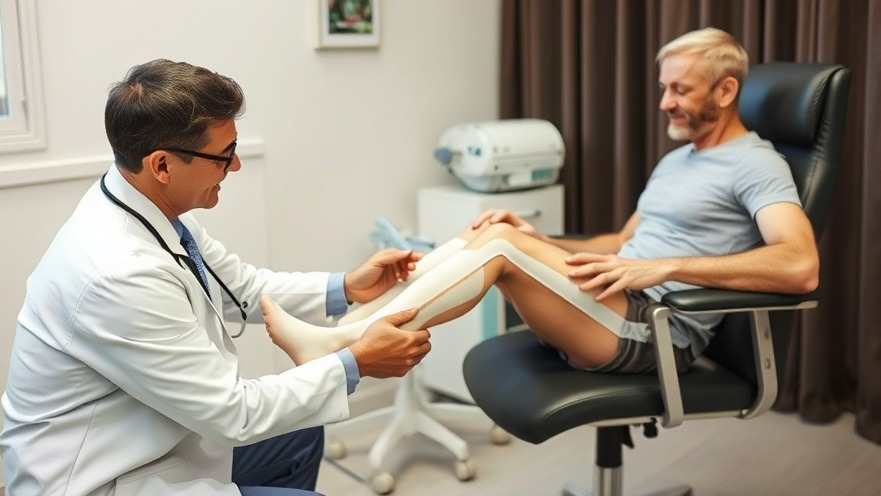
Understanding the Potential for Orthopedic Practice Growth
The landscape of orthopedic practice holds immense promise, yet many practitioners fail to capitalize on this potential. The recent surge in patient demand, driven by an aging population and advancements in medical technology, has created an opportunity-rich environment. However, for orthopedic practice owners and administrators, navigating this complex terrain requires a blend of clinical excellence and strategic business acumen.
Embracing Technological Innovations in Orthopedics
To thrive in today's competitive healthcare market, practices must not only keep pace but actively adopt emerging technologies that enhance patient care and outcomes. Recent advancements like robotic-assisted surgery facilitate remarkable precision, drastically reducing postoperative complications. For instance, integrating systems such as Stryker's Mako platform allows surgeons to operate within 0.5 millimeters accuracy, translating into proper patient care and a notable 15% decrease in complications.
Artificial Intelligence: A Game Changer in Diagnostics
Artificial intelligence (AI) stands out as a critical innovation reshaping orthopedic practices. Modern AI clinical decision support systems (CDSS) enhance diagnostic capabilities to levels comparable to those of experienced medical residents. Moreover, utilizing predictive analytics, practices can anticipate postoperative complications with striking accuracy, empowering healthcare professionals to make timely corrections and improve patient journey efficiency.
Personalized Medicine and Customization
Incorporating concepts of personalized medicine and 3D printing into practice strategies not only resonates with the modern patient but leads to significant operational efficiencies. By drastically reducing custom implant turnaround times, practices are better equipped to cater to patient-specific needs, with studies indicating that surgeons often adjust their surgical methods following the use of 3D-printed models, enhancing overall treatment success.
The Shift Towards Minimally Invasive Surgery
Additionally, the migration of orthopedic surgeries to outpatient settings necessitates familiarity with minimally invasive surgical (MIS) techniques. With a significant 68% of procedures transitioning to ambulatory surgery centers (ASCs), mastering MIS leads to reduced postoperative pain for patients, further promoting patient satisfaction and operational efficiency.
Personalized Patient Care: Taking It Beyond the Surgery
Delivering exceptional patient care extends well beyond the operating room. Systematic protocols and technologies are mandatory in ensuring high-quality outcomes across the entire patient journey. Implementing evidence-based guidelines, like Enhanced Recovery After Surgery (ERAS) protocols, aids in refining pain management and early mobilization strategies, significantly impacting patient recovery and satisfaction.
Financial Benchmarks: Understanding Your Practice's Viability
Key to enhancing your orthopedic practice's growth is a profound understanding of its financial health. Establishing financial benchmarks against industry standards helps you identify areas needing improvement. From revenue cycles to cost reduction strategies, being proactive in addressing financial aspects is critical for sustained growth.
Decisions to Strengthen Your Competitive Edge
Knowing these strategies provides you critical insights into decision-making within your orthopedic practice. The methods introduced aren't merely optional; they are increasingly essential for remaining competitive and relevant in today's healthcare environment. Owners must evaluate and adopt these advancements with a clear objective: transforming their practice into a beacon of excellence.
Actionable Insights for Practice Growth
For those looking to propel their practices to new heights, the first step is embracing a mindset of continuous improvement and innovation. Regularly invest time and resources into refining your clinical skills and adopting the latest technologies. Also, encourage open communication among staff about implementing and optimizing these advanced methods, ensuring everyone on your team is aligned in your growth strategy.
Finally, actively seek out mentorship and guidance from colleagues who have successfully navigated the complex landscape of orthopedic practice management. Collaboration is key in learning from others' successes and setbacks.
By steering your practice toward these comprehensive strategies, you not only enhance your service offerings but also secure your position as a top-tier provider in your community. The time for moving your practice forward is now. Embrace change, invest in technology, and prioritize personalized care to achieve extraordinary results.
 Add Row
Add Row  Add
Add 




Write A Comment